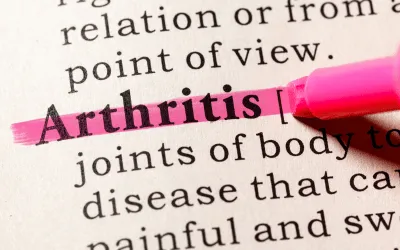About Arthritis
As the nation’s #1 cause of disability, arthritis affects nearly 60 million adults and 300,000 children. Over 100 types of arthritis and related conditions damage the joints and often other organs.
How can we assist you?
Helpful Tools for You

Exciting Breakthrough: Heart Muscle Regeneration Offers New Hope for Healing
Researchers at the University of Arizona College of Medicine have made a groundbreaking discovery that could transform the treatment of heart failure and potentially other conditions. Their study found that certain patients with artificial hearts are capable of regenerating heart muscle cells at a rate significantly higher than that of healthy individuals. This incredible finding brings fresh hope to the future of regenerative medicine.
Key Findings: The Heart’s Remarkable Ability to Heal
The study revealed that patients with artificial hearts produced new heart muscle cells at six times the rate of healthy individuals, providing compelling evidence of the heart’s ability to regenerate even after birth. This discovery not only opens new avenues for treating heart failure but also challenges long-held beliefs about the human heart’s capacity for self-repair.
While more research is needed to uncover why some patients experience more robust regeneration than others, this study marks a pivotal step forward in understanding tissue repair and recovery.
What This Could Mean for Arthritis Patients
This breakthrough has exciting implications for the arthritis community. Heart disease and arthritis often coexist, and advancements in regenerative medicine for one condition may pave the way for innovative therapies for others. Understanding how tissues regenerate could lead to new approaches for joint repair and inflammation management, addressing the root causes of arthritis-related pain and stiffness.
As researchers delve deeper into why artificial hearts seem to trigger such remarkable regeneration, we can remain optimistic about the potential applications of these findings in arthritis care and beyond.
A Step Toward a Healthier Future
"This is the strongest evidence yet that the human heart can regenerate after birth," the researchers said. The next phase of research will focus on identifying the factors that drive this regeneration and exploring how these insights can be applied to other tissues, such as cartilage and joints.
This breakthrough offers renewed hope for addressing interconnected health challenges, such as arthritis and heart disease. As science continues to uncover the body’s incredible capacity for self-repair, we inch closer to a future where managing chronic conditions becomes more effective and holistic.
Staying Informed and Optimistic
At the American Arthritis Foundation, we celebrate these milestones in medical research and their potential to revolutionize how we approach chronic conditions. Let’s remain hopeful and advocate for continued innovation that benefits not only heart health but also arthritis care and overall wellness.
Effects of Arthritis

Cause of Disability
In the United States, 23% of all adults, or more than 54 million people, have arthritis. It is a leading cause of work disability, with annual costs for medical care and lost earnings of $303.5 billion.

Workforce Effects
Sixty percent of US adults with arthritis are of working age (18 to 64 years). Arthritis can limit the type of work they are able to do or keep them from working at all.

Global Impact
In fact, 8 million working-age adults report that their ability to work is limited because of their arthritis. For example, they may have a hard time climbing stairs or walking from a parking deck to their workplace.
Promoting Interventions That Reduce Arthritis Pain
American Arthritis Foundation recognizes several proven approaches to reduce arthritis symptoms:
Be active. Physical activity—such as walking, bicycling, and swimming—decreases arthritis pain and improves function, mood, and quality of life. Adults with arthritis should move more and sit less throughout the day. Getting at least 150 minutes of moderate-intensity physical activity each week is recommended.
Protect your joints. People can help prevent osteoarthritis by avoiding activities that are more likely to cause joint injuries.
Talk with a doctor. Recommendations from health care providers can motivate people to be physically active and join a self-management education program. Should your arthritis be interfering with your activities of daily living you may be a candidate to receive many new treatments, and learn how to reverse the arthritis condition.
Have a question?
We're Here to Help
By providing my phone number, I agree to receive text messages from the business.


